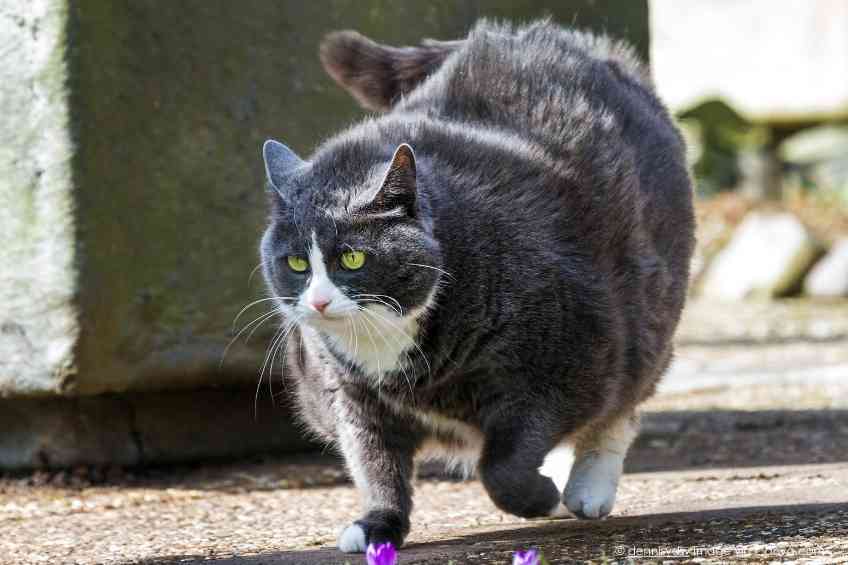By John Salak –
Americans on average are overweight. Perhaps 50 million or more in turn will jump onto diets every year in an effort to shed pounds, even though the vast majority of these efforts are in vain. All of this makes the battle of the bulge seem like a losing effort.
Insights and ultimately relief, however, may be at hand—or perhaps at paw. Researchers now claim that fat cats may help shed light on obesity origins and treatments for humans.
Veterinary researchers at The Ohio State University arrived at this conclusion after analyzing fecal samples from fat cats as the animals lost and maintained weight over the course of four dietary changes, including strict calorie reduction. The team found that food-related changes to the cats’ gut microbiome—the assortment of bacteria and molecules those bacteria produce and consume—have striking similarities to dietary effects on the gut previously seen in humans.
More research is needed, but chubby pussies seem critical to unlocking obesity secrets because their gut bacteria is similar to humans. This connection may reveal whether gut microbe-based therapy could be one way to battle obesity in people.
“Animals share our beds. They share our ice cream. There are all these things that people do with their pets that highlight they are a naturally occurring disease model with similar environmental exposures as humans,” reported lead study author Jenessa Winston, assistant professor of veterinary clinical sciences at The Ohio State University.
“Being able to see changes in cats that come up in the context of obesity and type 2 diabetes in people makes them a really good model to start looking at more microbiome-directed therapeutics for obesity in humans if we’re seeing a similar shift,” she explained. “Microbes we saw in this study also come up again and again in human studies—and clearly, people aren’t eating cat chow, right?”
Felines are critical to the research because Americans aren’t the only ones confronting weight issues. An estimated 60 percent of cats are obese or overweight in developed countries.
“My lab is focused on how we can harness the therapeutic power of microbes,” she said. “In order to do that, we have to understand how disease states may be different from health so that we can better try and figure out and target, mechanistically, changes that occur in the microbiome.”
The Ohio State effort had researchers feeding seven obese cats a four-phase diet over 16 weeks: free-feeding of commercial cat food for two weeks, free-feeding of a specially formulated weight-loss diet for one week and calorie-restricted feeding of the weight-loss diet to achieve one to two percent body weight reduction per week for 11 weeks. This was followed by a return to the original maintenance diet.
The analysis of fecal samples taken during the different diet phases focused on changes in the presence of short-chain fatty acids metabolites, molecules produced by bacteria during digestion. Fatty acids are of interest because they prompt specific types of communication between gut microbes and tissue in the rest of the body, including hormonal signals that can relate to inflammation and insulin resistance.
The team found that the abundance of a short-chain fatty acid called propionic acid, which in other mammals was shown to regulate appetite, reduce fat accumulation and protect against obesity and diabetes, was increased in feces when the cats were losing weight on the calorie-restricted diet.
“When the cats are on the special diet formulated for weight loss, propionic acid goes up and stays high, and then goes back down when they’re put back on the maintenance diet. So, it really is a dietary change,” Winston said. “This paper highlights that when we calorie-restrict cats that are obese, we can alter their microbial ecosystem—and those community shifts that we see likely correlate with some metabolic outcomes. I think that those parallels that we’re seeing in how the ecosystems change in a similar way is helpful,” she said.
The gut microbiome’s precise role in mammal obesity remains a mystery, but Winston noted that decades of evidence suggest these organisms and the molecules they produce are part of the problem behind what is now known to be a very complex disease.
This study’s feline findings suggest the pet cat gut profile could provide meaningful answers for both kitties and people, she added.













